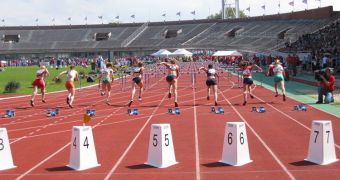The idea that athletes perceive and handle pain differently from other people has been around for a long time. Now, scientists say that analyzing how this pain suppression mechanism functions could result in the creation of more efficient pain management methods.
In a new study, a team of experts determined that pain thresholds are exactly the same in athletes and non-athletes, a conclusion that surprised the group. This threshold is an intensity limit, beyond which a stimuli begins to be perceived as painful.
On the other hand, the research also showed that athletes can indeed tolerate higher levels of pain without too much discomfort. The conclusion belongs to a meta-analysis of available research in this field. The work was carried out at the University of Heidelberg, in Germany.
Details of the investigation were published in the June issue of the esteemed medical journal Pain. Scientist Jonas Tesarz, MD, was the lead investigator on the new study. “Our analysis reveals that pain perception differs in athletes compared to normally active controls,” he says.
“Studies in athletes offer the opportunity for an evaluation of the physical and psychological effects of regular activity on pain perception, which might foster the development of effective types of exercise for relief in pain patients,” the scientist argues.
The team looked at 15 studies that were focused on analyzing how athletes react to pain stimuli, when compared to the reactions of average individuals. In most of these researches, pain was inducted by the experimenters, so that the study conditions could be controlled.
The studies included 331 control subjects and 568 athletes, and were conducted in the United States (8), Canada (2), Australia (1) and the European Union (4), Science Blog reports. The experts say that 12 of the papers dealt with pain tolerance, whereas 9 looked at pain thresholds.
Even when compared to normally active adults (not sedentary individuals), athletes were found to display higher pain tolerance overall. This tolerance was found to be dependent on the sport each of the athletes in question practiced.
“Further research is needed to clarify the exact relationship between physical activity and modifications in pain perception, and to identify the involved psychological factors and neurobiological processes,” the team leader says.
“However, the observation that pain perception is modifiable by physical activity provides promise for the use of non-invasive methods with few side effects for patients with chronic pain conditions,” Dr. Tesarz concludes.

 14 DAY TRIAL //
14 DAY TRIAL //